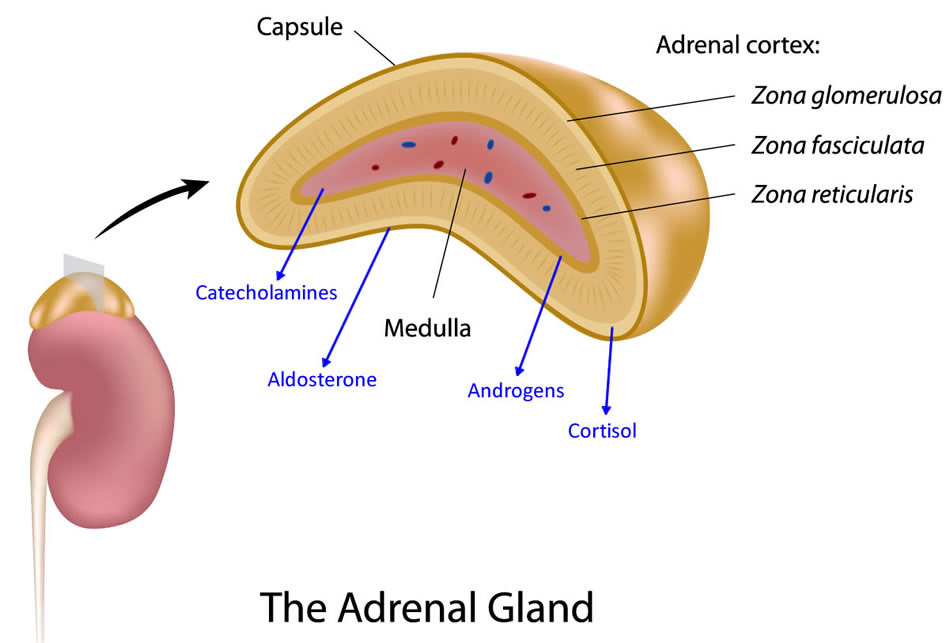
:max_bytes(150000):strip_icc()/GettyImages-141483267-56a796df3df78cf772976899.jpg)
Cortisol increases blood pressure by potentiating the vasoconstrictor action of catecholamines and angiotensin II on the kidney and vasculature. In adipose tissue, cortisol activates lipolysis, resulting in the release of free fatty acids into circulation. 1 Cortisol acts as an insulin antagonist ( Figure 15-2), increasing blood levels and peripheral use of glucose by activating key enzymes involved in hepatic gluconeogenesis and inhibiting glucose uptake in peripheral tissues (i.e., skeletal muscles). 1, 2Ĭortisol, the primary glucocorticoid, has several important physiologic actions on metabolism, cardiovascular function, the immune system, and for maintaining homeostasis during periods of physical or emotional stress. The zona fasciculata secretes glucocorticoids, and the zona reticularis secretes androgens, or sex hormones.


Aldosterone regulates physiologic levels of sodium and potassium and is relatively independent of pituitary gland feedback. The predominant hormone of the zona glomerulosa is aldosterone, a mineralocorticoid. All are derived from cholesterol and share a common molecular nucleus. The cortex manufactures three classes of adrenal steroids: glucocorticoids, mineralocorticoids, and androgens. The middle zone is the zona fasciculata, and the innermost zone is the zona reticularis. The adrenal cortex makes up about 90% of the gland and consists of three zones. ( Adapted from Thibodeau GA, Patton KT: Anatomy and physiology, ed 7, St. FIGURE 15-1 Structure of the adrenal gland, representative zones, and their main secretory products and physiologic actions.


 0 kommentar(er)
0 kommentar(er)
